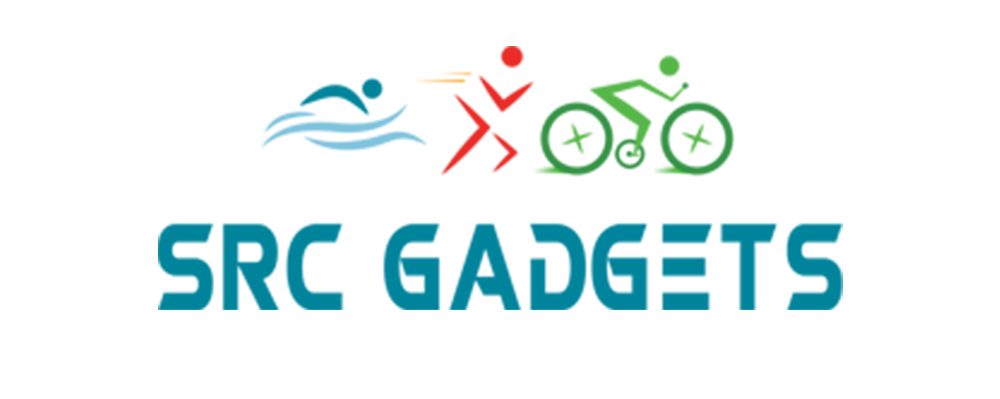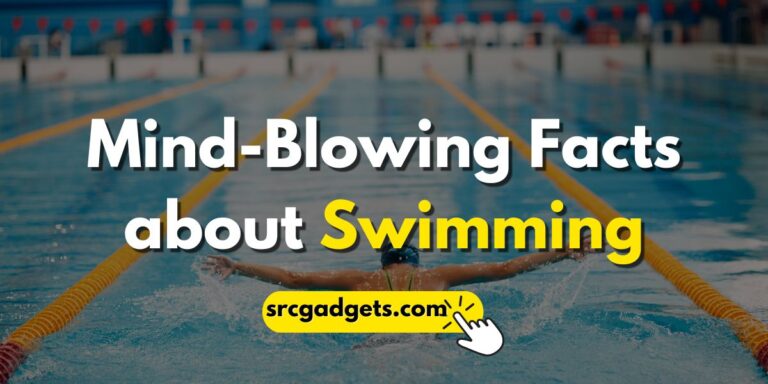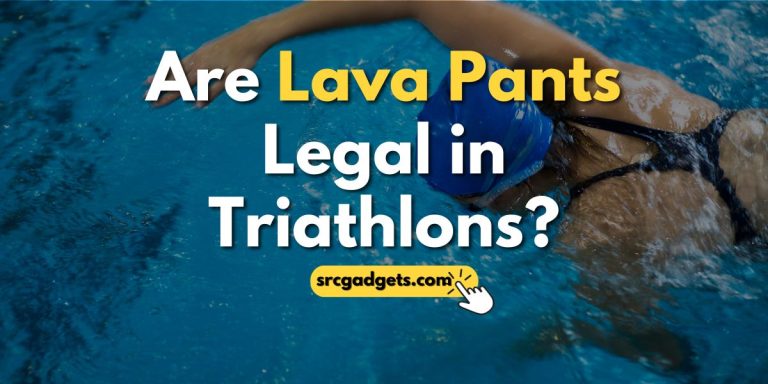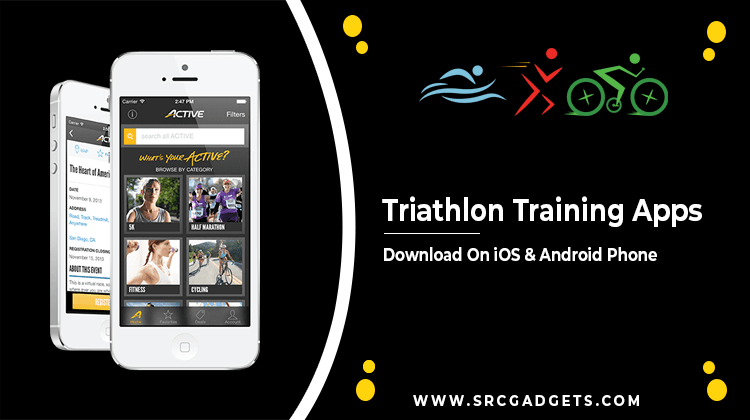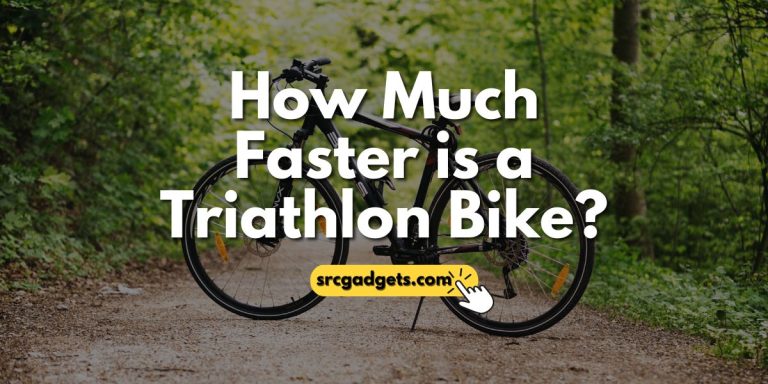Why Are Triathlon Bikes Different? | SRC Gadgets
The world of cycling showcases a diverse array of bike types, each tailored for specific purposes. Among these, triathlon bikes often raise eyebrows due to their unique design. So, why exactly are they different?
In short, triathlon bikes are meticulously engineered for aerodynamics, speed, and the distinctive demands of triathlon events. They accommodate an athlete’s need to conserve energy for the subsequent run after the bike segment.
As someone who has delved deep into the world of multi-sport competitions, I’ve experienced firsthand the critical role these bikes play. Their specialized geometry, paired with advanced components, not only provides a competitive edge but also adapts to the unique challenges triathletes face.
Triathlon bikes have some unique features that distinguish them from road bikes and make them more suitable for triathlon cycling. In this blog post, we will explore the key differences between triathlon bikes and road bikes and how these differences affect the performance, endurance, and versatility of triathlon cyclists.
Triathlon Bike vs. Road Bike: Highlighting Key Differences
1. Shape and Design
The most obvious difference between triathlon bikes and road bikes is the shape and design of the bike frames and the bike handlebars. Triathlon bikes have a more aerodynamic frame that reduces wind resistance and allows the cyclist to ride faster and more efficiently. Road bikes have a more traditional frame that is more comfortable and stable for everyday riding.
Another major difference is the type of handlebars that each bike has. Triathlon bikes have aero bars, which are aerodynamic handlebars that extend forward from the bike stem and allow the cyclist to rest their elbows on pads and grip the ends of the bars.
Aero bars allow cyclists to adopt a low, streamlined position on the bike, reducing drag and increasing speed. In contrast, road bikes feature drop handlebars: curved bars that provide various hand placements. These handlebars let cyclists alternate between an upright position for improved visibility and control and a lowered stance for enhanced speed and power.
2. Gearing System Optimization: Tailored for Triathlon Performance
Another key difference between triathlon bikes and road bikes is the gearing system. The gearing system consists of the chainset (or crankset), which is the set of chain rings attached to the pedals, and the cassette (or sprocket), which is the set of cogs attached to the rear wheel. The gearing system determines how hard or easy it is to pedal the bike at different speeds.
Triathlon bikes have a different gearing system than road bikes because they are designed for different purposes. Triathlon bikes are optimized for speed and efficiency on a flat or slightly rolling terrain, which is typical for most triathlon courses. Therefore, they have larger chainrings (usually 53/39 or 52/36 teeth) and smaller cogs (usually 11-25 or 11-28 teeth) that provide higher gear ratios and allow the cyclist to pedal faster with less effort.
Road bikes are more versatile and adaptable for various terrains and situations. They have smaller chain rings (usually 50/34 or 48/32 teeth) and larger cogs (usually 11-32 or 11-34 teeth) that provide lower gear ratios and allow the cyclist to pedal easier with more power. This is especially useful for climbing hills or accelerating quickly.
3. Endurance and Speed: Triathlon Bike s Competitive Edge

Another key difference over road bikes is their ability to enhance endurance and speed for long-distance cycling. Triathlon bikes are designed to help cyclists maintain a high level of performance throughout the entire bike segment of a triathlon race, which can last from one to six hours, depending on the distance.
Triathlon bikes achieve this by combining several factors that improve endurance and speed, such as:
a. Narrow Tires and Their Impact
Tire width is one of the factors that influence a bike’s performance. Simply put, it’s how wide a tire is when inflated. This width determines the tire’s contact area with the road. The larger the contact area, the greater the rolling resistance, which is the friction opposing the tire’s motion. Higher rolling resistance means more energy is lost, making the bike slower.
Triathlon bikes have narrow tires, usually between 23 and 25 millimeters, that have less contact area and less rolling resistance than wider tires. Narrow tires allow the bike to roll faster and more smoothly on paved roads, which is ideal for triathlon cycling. However, narrow tires also have some drawbacks, such as less traction, less comfort, and more susceptibility to punctures.
Road bikes have wider tires, usually between 28 and 32 millimeters, that have more contact area and more rolling resistance than narrower tires. Wider tires provide more traction, comfort, and puncture resistance than narrower tires. However, wider tires also make the bike slower and heavier on paved roads. Wider tires are more suitable for off-road riding or rough road conditions.
b. Customization Options for Endurance
Customization is another factor that enhances endurance and speed on triathlon bikes. This term encompasses the modifications or adjustments made to different parts of the bike, tailoring it to the cyclist s unique needs and preferences. These changes can be made to the bike s components, accessories, or settings, all with the aim of boosting performance, comfort, or functionality.
Triathlon bikes offer a lot of customization options for cyclists who want to optimize their endurance and speed. Some of the most common customization options are:
Road bikes also offer some customization options, but they are usually more limited and less specific than triathlon bikes. Road bikes are more standardized and generic, which makes them easier to use and maintain but also less adaptable and personalized.
4. Versatility in Terrain: Triathlon Bikes Adaptability
A key distinction between triathlon bikes and road bikes is their adaptability to varied terrains. While triathlon bikes excel in flat or mildly rolling terrains, they can also tackle a range of conditions with a few tweaks. These bikes can be tailored to navigate challenges like hills, curves, wind, and uneven surfaces.
Some of the ways that triathlon bikes can be customized for different terrains are:
a. Road Biking Excellence
The most common terrain for triathlon cycling is paved roads. Triathlon bikes are excellent for road biking because they are designed to maximize speed and efficiency on smooth surfaces. Triathlon bikes can achieve high speeds on flat or downhill sections by using their aerodynamic frame, aero bars, narrow tires, and high gear ratios. Triathlon bikes can also maintain a steady pace on uphill sections by using their lightweight frame, low rolling resistance tires, and optimal gear efficiency.
To customize triathlon bikes for road biking, cyclists can choose wheels and tires that are suitable for their preferred road conditions. For example, cyclists can choose lighter wheels with fewer spokes for faster acceleration and lower wind resistance or heavier wheels with more spokes for better stability and durability. Cyclists can also choose tires with different tread patterns, rubber compounds, or inflation pressures for different levels of grip, comfort, or puncture protection.
b. Off-Road Riding Potential
Another possible terrain for triathlon cycling is off-road trails. Off-road trails are unpaved paths that can have various features, such as gravel, dirt, mud, grass, sand, rocks, roots, or water. Off-road trails can be challenging and fun for cyclists who want to experience nature and adventure. Off-road trails can also improve cyclists skills, such as balance, coordination, agility, and strength.
To customize triathlon bikes for off-road riding, cyclists can make some changes to their bike setup to increase their traction, control, and comfort on rough surfaces. For example,
However, it is important to note that triathlon bikes are not designed for off-road riding as their primary purpose. Triathlon bikes are still optimized for speed and efficiency on paved roads, which means they have some limitations and disadvantages when used on off-road trails.
So, while triathlon bikes can be ridden on off-road trails for training variety or adventure, they will be slower and less capable than mountain bikes designed specifically for technical terrain. Careful equipment choices and riding style adjustments are needed to compensate.
Conclusion
Simply, triathlon bikes stand out distinctively from regular road bikes due to their specialized design and features tailored for triathlon cycling. With aerodynamic frames, aero bars for a streamlined position, and optimized gearing systems, these bikes are engineered for speed, efficiency, and endurance over long distances on mostly flat terrains.
The narrow tires enhance speed but might compromise comfort, necessitating a thoughtful consideration of the trade-offs involved. Triathlon bikes also offer extensive customization options, allowing riders to fine-tune their setup for optimal performance and comfort.
While they can be adapted for different terrains, their primary domain is paved roads, and they may not provide the same versatility or comfort as road bikes in varied conditions. Ultimately, the choice between a triathlon bike and a road bike should be guided by the cyclist s specific racing goals, terrain, and preference for speed versus versatility.
Have you ever experienced the thrill of a triathlon or the joy of a serene bike ride on a quiet road? We’d love to hear from you. Share your experiences, ask questions, or dive deeper into the world of cycling with our related articles. Let’s continue the conversation and foster a community of cycling enthusiasts!
Frequently Asked Questions
Why is aerodynamics so crucial for triathlon bikes?
Aerodynamics is vital for triathlon bikes to reduce wind resistance, enabling cyclists to achieve higher speeds and conserve energy over long distances.
Are there specific materials preferred in the construction of triathlon bike frames to enhance their performance?
Yes, triathlon bike frames are often made of lightweight and strong materials like carbon fiber to optimize speed and durability.
Is the seat or saddle design different in triathlon bikes compared to road bikes?
Yes, triathlon bike saddles are often designed to support a more forward-leaning posture, providing comfort during aerodynamic positions.
